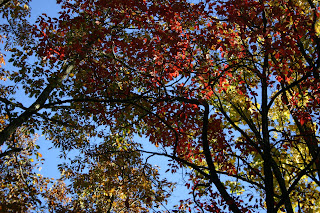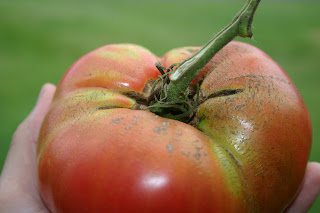
Having a difficult time finding words for this newsletter I picked up my copy of Mary Oliver’s American Primitive, and opened at random. Here I found…
Fall Song
Another year gone leaving everywhere
its riched spiced residues: vines, leaves,
the uneaten fruits crumpling damply
in the shadows, unmattering back
from the particular island
of this summer, this Now, that now is nowhere
except underfoot, moldering
in that black subterranean castle
of unobservable mysteries – roots and sealed seeds
and the wanderings of water. This
I try to remember when time’s measure
Painfully chafes, for instance when autumn
Flares out at the last – boisterous, and like us longing
To stay – how everything lives shifting
From one bright vision to another, forever
In these momentary pastures.
There are no better words to describe the feeling about this time of year on a vegetable farm, when the cold and the rot and the dark finally overcome the once feverish life in the fields. It is fitting to think of the locus of this life and growth process moving underground, I can sense the movement as I grow more reflective in the shortening days…reflective and restless at once, unsettling as a warm December, I too am “flaring out at the last” as the roots and the greens hold 
I believe investment in long-term health begins with seasonal vegetables. I also believe I would be amiss to not discuss vegetables and health when recapping this season. Inspired by the documentary “Fat, Sick and Nearly Dead” and Dr. Furman’s Eat to Live program (and having loads of vegetables needing consumption) my dad decided to combine a juicing regimen while adopting a vegetarian diet. He lost 30 pounds in just a couple months and has steadily dropped another 10 since. Without minimizing the enormous physical benefits of losing the weight (he’s on his way to kicking his blood pressure meds), his attitude and outlook have undergone a sea change, there’s a kick in his step and light in his eye that helps pick me up when he drops by the farm at the end of his day. For me it’s a wonderful thing to make a business of producing something actually healthy on so many levels.
And produce we did this year (with Mother Nature on our side). The harvest began in April and has been nearly nonstop since. April brought green onions, salad mix, radishes and spinach. The first asparagus shoots got us excited for Spring 2012 when we’ll finally taste in earnest the fruit of their active ‘subterranean’ life. May brought more salad greens, all sorts of lettuces, baby carrots and beets, Asian greens (Napa C

We planted a load of garlic cloves last fall…about 2300. The garlic harvest was accordingly abundant. Nevertheless, there is a reason it is typically grown in near desert conditions…humid weather during curing and storage can invite rot. While much of it has kept fairly well hanging in the barn, I found quite a number of damaged cloves cleaning it this fall in preparation for planting. Hopefully the stock will be viable for a successful (albeit intentionally smaller) harvest next year. I’ve found it more in everyone’s interest to grow more sweet and storage onions next year instead of loads of garlic. We have yet to master the art of storing onions past October…it will certainly be an objective for next season.
August brought peppers, eggplant (although disappointing numbers and size), melons (also somewhat below our standard), the aforementioned sweet corn, more tomatoes, blueberries and hard squashes. The blueberry bushes are reaching pretty decent size and should produce quite a bit next season. This August, we decided to make tree fruits part of our regular CSA shares. We sourced some magnificent fruit from Windy Hill Orchard in Southern VA. Their apples and peaches are superb and nearly all-natural (they would I believe meet organic standards in WA state). September brought a close to our Summer CSA with some superb arugula. Rounding out the late summer offerings were shallots, crowder peas, more green beans, sweet potatoes, okra, storage potatoes and onions.
Early October brought some much-needed down time following preparations for the fall CSA. A restful vacation to Asheville rejuvenated my weary bones and readied me for yet another harvesting bonanza. The Fall program brought kale, turnips, pac choi, peppers, lettuces, mesclun, green onion, chard, endive, mustard, beets, carrots, radishes, broccoli, cabbage and apples…which were supplemented by storage potatoes and sweet potatoes, garlic and hard squash. Fall is my favorite time to dine from the garden, and chard one of my favorite veggies (I know it sounds crazy) so I’ve been living high on the hog. With a couple months to lay low, recharge and envision next season’s farm, I feel full of anticipation and gratitude. Thank you and happy holidays.


